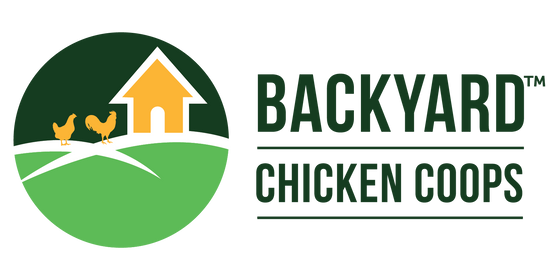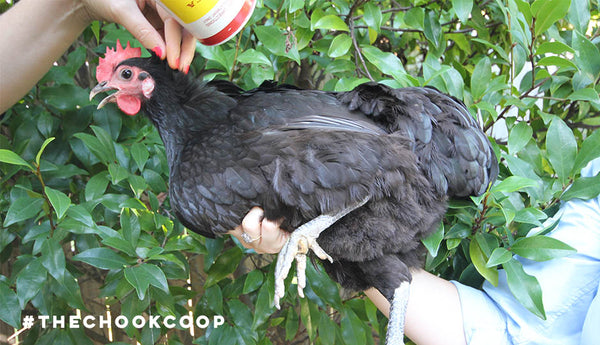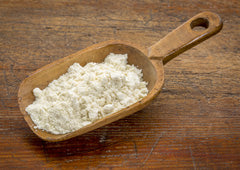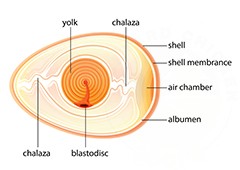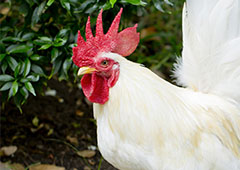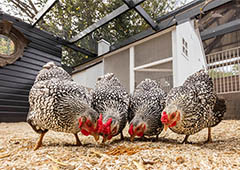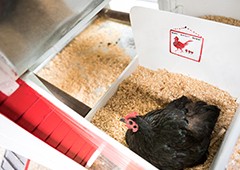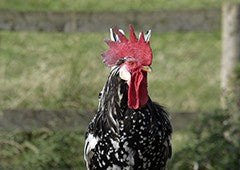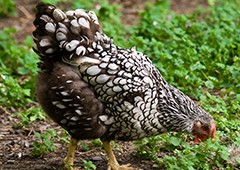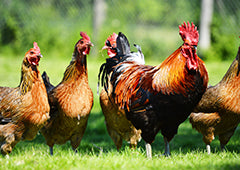Having a basic understanding of a chicken’s intricate digestive system is very helpful when it comes to understanding their digestive health. Knowing what’s normal is the key to recognizing abnormalities, which will empower you to spot symptoms more quickly. Then, you can take the appropriate steps to treat your chook’s digestive woes before it progresses to something more serious.
A Chicken’s Digestive System in an Eggshell
A chicken has a digestive system similar to most birds. Beginning with their mouth and because chickens do have not teeth, they use their able tongues to push food to the back of their mouth where it travels down the esophagus and into the crop. From the crop, a temporary holding tank, food gets sent either to the “true” stomach (proventriculus) or to the gizzard (ventriculus). After food has been “chewed” by the mighty muscles of the gizzard, food passes into the small intestine, where nutrients are taken in to the ceca and beneficial bacterial continue to break food particles down. From the ceca, food moves into the large intestine and then exits as droppings through the cloaca.
A Closer Look- The Cluck Worthy Components of a Chicken’s Digestive Tract
The Beak and Mouth: A chicken’s beak is a force to be reckoned with. Sharp in skill and sharp in general, a chicken’s beak is an amazing tool-made of the same material as human fingernails, they will sharpen on rough surfaces to keep it in tip top pecking shape. With no teeth to break down food, a chicken’s mouth starts the whole digestive ball rolling with a host of enzymes to tackle the job, before its tongue sends the moist food toward the back of its mouth for swallowing.
The Esophagus
Simply put, the esophagus is basically a long pathway to the stomach.
The Crop
The crop is a slight exit ramp off the esophagus “highway” to the stomach. The crop’s role in chicken health is twofold - while it plays an important role in digestion, acting as a sort of sorting bin for food, it also stores leftover bits of feed for the chicken to enjoy later. A chicken can peck more food than it needs at any given time because its worthy crop will store any egg-cess food for when they need it most. Simply egg-straordinary!
The crop acts as a director of sorts, sending food to either the Proventriculus (stomach) or to the Ventriculus (gizzard). A chicken’s stomach breaks down easy to digest food, whereas, more troublesome complex foods such as long grains and fibrous materials are sent to the gizzard where grit helps to break these down.
The Proventriculus
The Proventriculus, or what some avian veterinarians refer to as a chicken’s “true” stomach, is really where the real digestive action begins. Abundant acid and energetic enzymes work together to mash and further break down food.
The Ventriculus
The Ventriculus or gizzard is where more complex food is thoroughly ground up. The gizzard is home to magnificently strong muscles whose job is to further grind up the already mashed up food sent from the stomach or to break down long grains and grasses and fibrous materials that the typical backyard flock pecks up during free-range time. Vigorous muscle contractions work together with little stones to crush food into tiny pieces. Fortunately, chickens who free-range regularly typically ingest enough stone matter to aid the gizzard’s digestive maneuvers.
The Small Intestine
After being thoroughly ground up, food passes into the small intestine where it takes in essential nutrients.
The Liver
A chicken’s liver uses bile to break down carbohydrates, fats and proteins for use in their body.
The Caeca
These two small glands located off of the large intestine use bacteria to ferment any undigested material.
The Large Intestine
The Large Intestine absorbs water and removes unnecessary waste products.
The Cloaca
The Cloaca is a small area located just inside a chicken’s vent area where digestive system wastes combine with a chicken’s urinary wastes or urates and exit through the vent.
Common Causes of Digestive Distress
A chicken’s digestive system is a highly tuned food processing machine. However, from time to time your chooks may egg-sperience digestive distress. The two most common culprits responsible for digestive woes in chickens are worms and crop malfunctions. Though even a mild worm infestation can wreak havoc in your flock, worms are easily preventable and easily treated should they squirm their way into your flock. Crop malfunctions on the other hand, can become serious if not diagnosed early. If in your attempt to treat a potential crop problem, you do not see improvement in a day or two, always seek the advice of a veterinarian.
In addition to worms and crops issues, obesity can also cause digestive disturbances. Excess weight can put a strain on a chicken’s liver and kidneys causing those organs to be more prone to disease.
Unfortunately, several more serious conditions or diseases can be responsible for your chook’s digestive distress. As we often preach here in the Learning Center, “Knowledge is power!” And, the power lies in the ability to diagnose and treat both of the above mentioned culprits or else to be able to rule them out, so you can quickly assess your flock for signs of the following more serious conditions:
-
Dehydration
- Symptoms - listless and inactive, diarrhea, pale combs and wattles and panting
- Enteritis (an inflammation of the intestines)
- Symptoms - diarrhea, lack of appetite, a drop in weight, slow growth and development and unusually thirsty
-
Coccidiosis
- Symptoms-bloody or watery diarrhea, no interest in drinking or eating, weak and listless and pale combs and skin
- Avian Intestinal Spirochetosis (a bacterial infection that affects the cecum and the intestines)
- Symptoms - diarrhea and a drop in egg production
-
Lymphoid Leukosis
- Symptoms-diarrhea, drop in weight, lack of appetite and weak and listless
The Impressive Intestinal Microorganism Population
Just like in humans, the intestinal tract of chickens is populated with millions of tiny microorganisms that proactively work to keep your chooks delicate digestive system healthy. Chicks hatched from mother hens receive their beneficial microorganisms naturally. Brooder babies will need the help of probiotics. A chicken’s digestive system is healthy when its beneficial microorganism population is abundantly living and thriving within.
Now that you have a general working knowledge of your fine feathered friends’ digestive system, you will be much better equipped to recognize any potential digestive distress before it becomes much more serious. As in all things, prevention is better than cure! Grab our Hen Health Kit and keep your chooks happy and healthy all year round.
Knowing more about your flocks' anatomy and functions is a great way to identify and prevent health issues. It is vital to make sure that you've got the knowledge you need to raise a happy, healthy flock. Did you know 67% of chicken keepers surveyed experienced a chicken health or behaviour issue in the first 12 months that they didn’t know how to handle?
But don’t worry! Our feathered friends over at Chickenpedia have created a Chicken Healthcare Course. It is a valuable online course that covers everything you need, including what to look for in an unhealthy chicken and how to support your egg-laying hens to optimal health. All of their courses are really well structured and filled with essential knowledge, which is why I highly recommend them to all of my readers! From raising baby chicks to feeding to behavior, you’ll find practical information that’ll give you the knowledge and confidence to successfully look after your chickens.
Check out Chickenpedia today. As a member, you will also get access to the ALL of their chicken courses!

